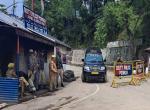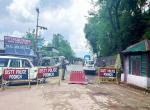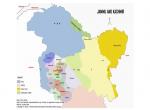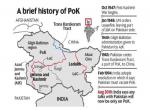In the continuing trend of Kashmiri youth joining militancy, five youth from five villages under the jurisdiction of Srigufwara and Bijbehara police stations in Anantnag district went missing in the last week of June. They showed up on social media soon after, holding AK-47 rifles. The trend is not new. It continues unabated since 2015 when a 15-year-old Burhan Wani dropped out of Class X and joined the Hizbul Mujahideen. He posted his unmasked pictures on social media that showed him carrying an AK-47.
Burhan, romanticized as the poster-boy of militancy in Kashmir, was eliminated in an encounter on July 8, 2016 in Anantnag district. Following this, Kashmir witnessed an unprecedented upheaval for about six months. By the time the agitation died, about 125 individuals, most of them in their 20s, were killed and thousands others injured in clashes with security forces.
Three years down the line, the trend of Kashmiri youth joining militant ranks continues. For the first time, local militants outnumber foreign mercenaries in the conflict theater of Kashmir. Why is this trend going unchecked? Intelligence agencies, policy makers and Kashmir watchers must view this development with alarm. My analysis and research on the subject convinces me that there are many answers to this question, not one. This brief article is restricted to one aspect which has not caught the attention of Kashmir watchers to the extent it deserves.
Data available with security and intelligence agencies reveals that 66 local youth joined militant ranks in 2015. In 2016, the number went up to 88. In 2017, the number of local youth in militancy was 126. In 2018, the number further increased to 196. This year, 62 local youths have joined militant ranks so far. The intake of youth into militancy has shifted from the most infested districts of Pulwama and Shopian to the less vulnerable Anantnag district. Indicators are that Anantnag is going to be the new hot-base of the militants. Ansar Gazwat-ul Hind too has found new pastures in Bijbehara and Srigufwara areas in South Kashmir’s Anantnag district. It is believed that the global Jihadi affiliate Gazwah has recruited some youths from this area.
The reasons are many, ranging from the institutional radicalization of youth in South Kashmir by Jamaat-e Islami to the political uncertainty prevailing in Kashmir and non-availibility of resources and avenues for the youth bulge.
Burhan Wani’s romanticized adventure when he was alive and his eulogization after he was killed are important factors for the trend of local youth embracing militancy. The romaticization of Burhan Wani as a militant was initiated by a leading English daily of the country. After Burhan posted his unmasked photographs on social media armed with an AK-47, the news-article carried the same photograph – a handsome young Kashmiri bearing arms and dressed in fatigues. The newspaper headline, taken in a bold font, called him the poster-boy of Kashmir militancy. This led to veritable media frenzy. Soon, Burhan was the biggest news from Kashmir in the national media. The local media soon joined the bandwagon with the same headline – the poster-boy of Kashmir militancy. Social media amplified the news manifold, making Burhan the most popular militant commander in Kashmir. The soaring popularity of his young man made him an inspiration for Kashmiri youth.
Burhan did not carry out any daring attacks against the security forces. He leveraged social media and made good use of his popularity among the youth in South Kashmir. He executed his plans meticulously, leaving the police and security agencies wondering how to deal with him. One, Burhan used his immense media appeal in bringing together the diverse militant groups operating in Kashmir. He gave an ideological, rather theological direction to militancy in Kashmir. Now militant groups would operate in a single domain, without hurting or questioning each other’s jurisdiction. Second, during his two years of misplaced heroism, Burhan toured every single village in South Kashmir. He established sleeper cells everywhere to provide logistic and human resource support to every single militant organization which approached them. These cells are active till now.
There are eight to ten youth in each sleeper cell who work closely, communicating with their counterparts in other villages and also with militants physically. Smart phones are not used due to strategic reasons. The network is active and quick to respond. As one militant dies, another one is ready to take his place. The number of militants is kept at a constant due to shortage of arms and other resources.
Burhan had a strong appeal among both boys and girls. Hence he could find volunteers for the sleeper cells easily. It was during this period that young men in many areas threatened their parents if the older generation refused to provide shelter to militants in their home and hearth. The larger-than-life persona gifted to Burhan by the national and then the local media gave him an overwhelming appeal among radicalized Kashmiri youth. This turned Burhan into a star recruiter for militancy. Sharp and intelligent that he was, he made the radicalized youth believe that every one of them was a Burhan.
Kashmir now has two kinds of Burhan followers. One group comprises those who take to militancy as an adventure to earn name and fame. This group is motivated by the romanticization of militant commanders on social media and the huge funeral procession of slain militants. This group belongs to the marginalized sections of the society. They are ambitious but see no opportunities which may enable them to prosper and improve their life. The other is the group of youth deeply influenced by the toxic ideology of Jamaat-e Islami, who want to fight infidels and the ‘others’. Burhan was an inspiration for both these groups.
After his death in July 2016, Burhan was eulogized by Pakistani premier Nawaz Sharif. This impressed and inspired Kashmiri youth in large numbers, particularly the Burhan fan club in South Kashmir. Hundreds of them decided to jump into militancy, and hundreds more are waiting for their turn.
This year on Burhan’s third death anniversary on July 8, separatists did not issue a strike call. But life was thrown out of gear. Burhan continues to enjoy a large fandom in Kashmir. They will not allow their hero to vanish from public memory. Burhan remains the most popular terrorist commander of all the times in Kashmir. He rules social media. Some surviving militant commanders and separatists may be haunted by the larger-than-life image of Burhan, which has overshadowed one and all in that camp. But the fact is Burhan remains the inspiration for Kashmiri youth to take to the deadly path of militancy. The sleeper cells constituted by Burhan during his lifetime provide human resources to militancy on sound ideological basis rather than on organizational basis.
Sleeper cells constituted by Burhan in Anantnag district have been strengthened now. That is why we see a sharp rise in recruitment into militant ranks from select pockets of South Kashmir. This may be part of a bigger project to shift the battle field from Shopian, Pulwama and Kulgam districts to Anantnag in the coming times. The fidayeen attack on CRPF at Anantnag town last month could be the beginning of a larger game plan being executed from across the border. The security and intelligence agencies must gear up to face this challenge.
(Bashir Asad is a Srinagar based senior journalist from J&K. An author and researcher, he also engages in peace-building initiatives in Kashmir.)
(The paper is the author’s individual scholastic articulation. The author certifies that the article/paper is original in content, unpublished and it has not been submitted for publication/web upload elsewhere, and that the facts and figures quoted are duly referenced, as needed, and are believed to be correct). (The paper does not necessarily represent the organisational stance... More >>
Image Source: https://s3.amazonaws.com/cdn.s3.webcontentor.com/OFFICE/SHEHJAR001/files/extracted/2008August1/terrorist.jpg










Post new comment